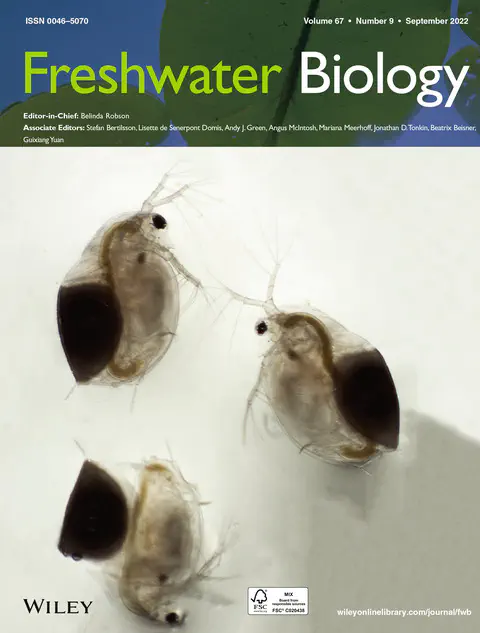Influence of internal seiche dynamics on vertical movement of fish
Telemetry study revealed the fish reaction to seiche dynamics in Central European lakes

Abstract
Internal seiches are common in stratified lakes, with significant effects on stratification patterns, hydrodynamics and vertical nutrient transport. In particular, seiches can change the vertical distribution of the thermocline and the cold hypolimnetic and warm epilimnetic water masses by several metres on a timescale of a few hours, leading to rapid and strong changes in temperature profiles and oxygen availability, with profound effects on mobile and sessile organisms. This could affect fish communities directly, through physiological stress and elevated mortality, and indirectly, through prey distribution. The aim of this study was to analyse the effects of internal seiche dynamics on lacustrine fish behaviour, and to characterise fish reaction patterns, with the main focus on vertical movement of fish in the vicinity of a shifting thermocline, and avoidance of cold hypolimnetic water. The analysis was based on acoustic telemetry data from Lake Milada, a post‐mining lake in the Czech Republic, with a total of 61 tracked individuals of four species: northern pike (Esox lucius), wels catfish (Silurus glanis), tench (Tinca tinca) and rudd (Scardinius erythropthalmus). The effects of seiche dynamics on the four species studied were weak but significant during the day, while at night they affected only rudd. Upward seiches elicited stronger responses in fish than downward seiches, and the impacts occurred only during the strongest seiche events. Thermocline shifting during seiche events may induce a transient reduction in habitat for seiche‐reacting species, and thus affect predation and other inter‐ and intra‐specific interactions, as well as fish community dynamics. Seiche had a significant effect on the four studied species during the day, but only on rudd during the night.